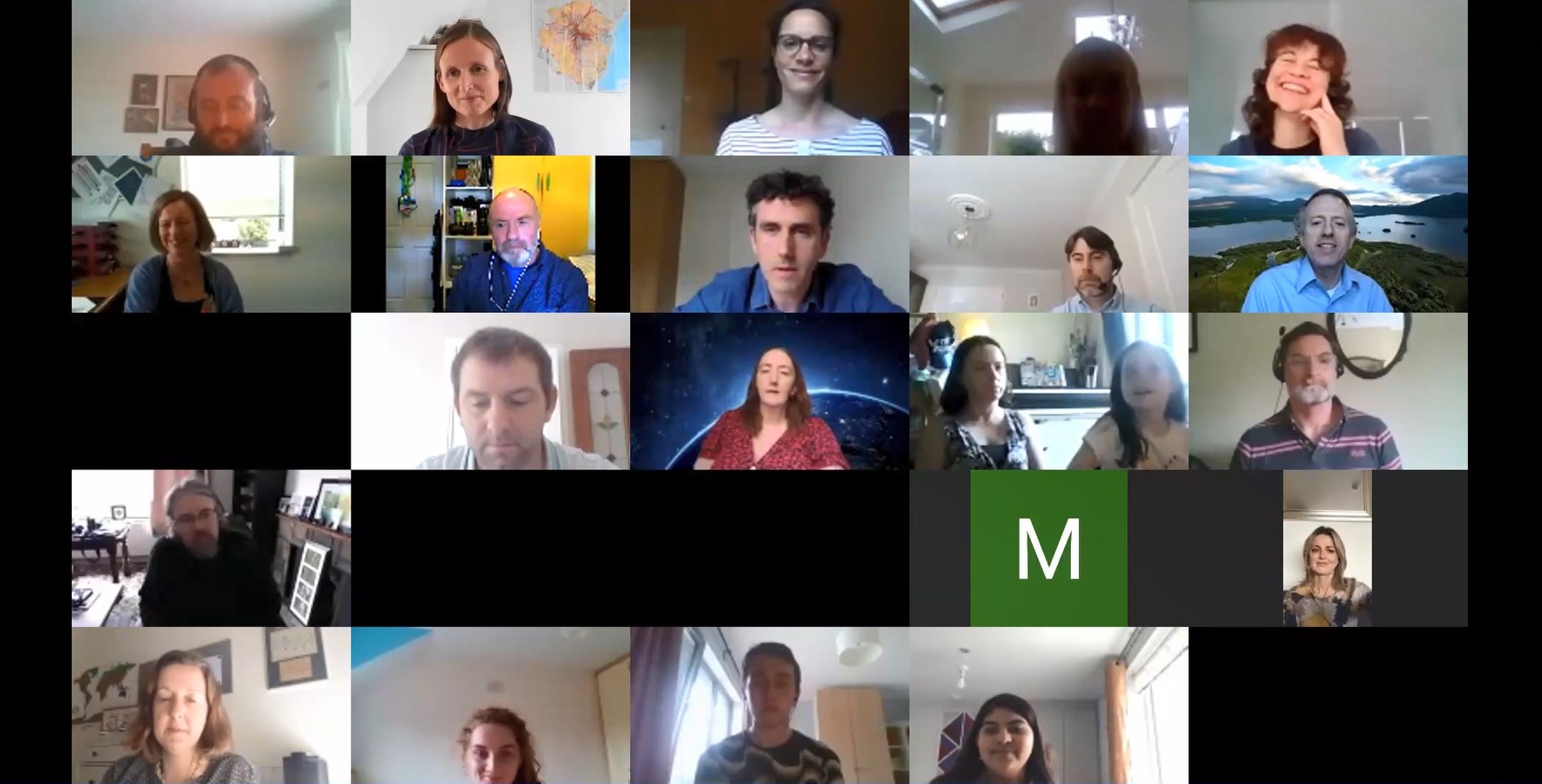Stars and STEM Stories
Virtual Celebration Highlights Irish Students’ Efforts to Promote Awareness of Traffic-related Air Pollution as Part of Air Quality Campaign

In May 2020, GLOBE Ireland held an online event to celebrate the completion of the 2019/2020 Air Quality campaign. Sixty-four schools from around Ireland took part in the campaign, with their efforts focusing on assessing traffic-related air pollution around schools and raising awareness around the topic of air pollution.
Teachers and students who had participated in the campaign attended the online celebration. Additional participants included GLOBE Implementation Office (GIO) Director, Dr. Tony Murphy; the Irish Environmental Protection Agency (EPA) Director General, Laura Burke; EPA representatives from the Citizen Science and Air Quality teams; the Director of the Environmental Education Unit (EEU) of An Taisce, Michael-John O’Mahony; and NASA scientists Michael J Garay and Peter Falcon.
“We were delighted that Michael J Garay, NASA scientist, was able to present a very topical and interesting talk on ‘Tracking COVID-19 from Space: What We Can and Cannot Do and Why It Matters,'" Aileen Bright (Environmental Education Unit at An Taisce) said.
During the online event, Laura Burke, the Director General of the EPA, said: “We are delighted to support GLOBE. Having citizen scientists doing additional monitoring (of air quality) complements EPA’s own monitoring, giving us more information to further refine our work.”
During the campaign, schools measured nitrogen dioxide (NO2) outdoors at three different locations around their school grounds: one close to a main road; one at a school drop off/pick up point; and one in a relatively sheltered location. The teachers and students mounted diffusion tubes at the three locations for a short duration of time (2-4 weeks) in October 2019 and February 2020. The tubes were then sent to a laboratory to be analyzed.
“Emissions from traffic are the main source of nitrogen oxides in Ireland, along with electricity generating stations and industry. Nitrogen dioxide can cause respiratory irritation and can worsen asthma and bronchitis. It is also linked to the formation of ground level ozone and acid rain. As a result, the World Health Organization (WHO) and the European Union (EU) have issued guidelines recommending that nitrogen dioxide does not exceed 40 micrograms per cubic meter (µg/m3) on an annual basis. Levels of nitrogen dioxide in Ireland are moderate but are increasing due to growth in traffic numbers,” Bright said.
“The GLOBE Air Quality campaign results suggest that for most schools, NO2 values are well below the threshold nitrogen dioxide guidelines issued by the WHO and the EU; however, schools located in cities and suburbs of cities recorded higher nitrogen dioxide levels compared to schools located in small towns and rural settings. The GLOBE air quality campaign results suggest that more research is needed to understand nitrogen dioxide in urban environments and more effort is needed to decrease traffic-related air pollution,” Bright said.
Bright said that this effort is important to The GLOBE Program because, “in Ireland, the GLOBE team as part of the Environmental Education Unit (EEU) of An Taisce, have built up a community of students, teachers, and scientists (EEU, EPA AQ/Citizen Science Teams) who together have worked hard to investigate local air pollution around schools. This work highlights the strength of citizen science in promoting awareness around the topic of traffic-related air pollution.”
“The campaign provides a collaborative platform for schools to share their research and insights, with a national audience (GLOBE Air Quality events 2019 and 2020, the BT Young Scientist Exhibition) and with an international audience (the 2020 GLOBE International Virtual Science Symposium, the 2019 GLOBE Annual Meeting in Detroit, Michigan, USA). The Irish GLOBE community has gathered over 230 nitrogen dioxide measurements since the campaign began in February 2019. It has also led to teachers and students participating in related GLOBE atmosphere and biosphere protocols. To date, 60 teachers have collectively entered 2,800 data points on the GLOBE website.”
“The Irish GLOBE team would be happy to share knowledge about our campaign and link with other GLOBE countries that wish to do a similar traffic-related air quality investigations,” Bright said. “Please visit our GLOBE country page at: https://www.globe.gov/web/ireland for more information on the campaign or email us with further questions at: globe@eeu.antaisce.org.”
To watch a video of the online event, click here.






